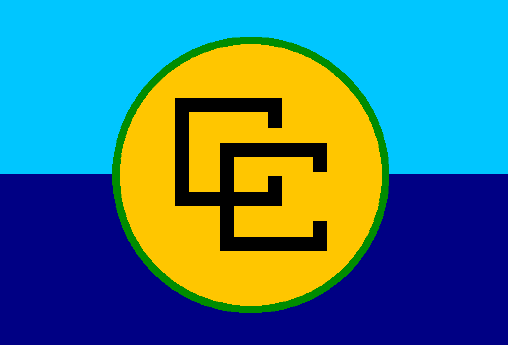
Established in 1973, the Caribbean Community (CARICOM) is an organization of 15 Caribbean nations and dependencies. CARICOM’s main purposes are to promote economic integration and cooperation among its members, to ensure that the benefits of integration are equitably shared, and to coordinate a somewhat joint foreign policy.
Its major activities involve coordinating economic policies and development planning; devising and instituting special projects for the less-developed countries within its jurisdiction; operating as a regional single market for many of its members and handling regional trade disputes.
Since the establishment of the Caribbean Community (CARICOM) mainly by the English-speaking parts of the Caribbean region, CARICOM has become multilingual in practice with the addition of the Dutch-speaking Suriname on 4 July 1995 and French- and Haitian Kreyòl speaking Haiti on 2 July 2002, leading to the suggestion that Spanish should become a working language in order to represent the Spanish speaking nations of Cuba, Puerto Rico, and the Dominican Republic, as well as in Panama, Venezuela and the Caribbean coast of Colombia.
In 2001, the heads of government signed a Revised Treaty of Chaguaramas, which cleared the way for a Common CARICOM market, which was favoured over a Single Market and Economy, in an attempt to avoid the same strains and failures that befell Trinidad and Tobago and Jamaica during the West Indies Federation.
Part of the revised treaty among member states includes the establishment and implementation of the Caribbean Court of Justice. Since 2013 the CARICOM-bloc along with the Dominican Republic is tied to the European Commission via an Economic Partnership Agreements known as CARIFORUM signed in 2008. The treaty grants all members of the European Union and CARIFORUM equal rights in terms of trade and investment. Within the agreement under Article 234, the European Court of Justice also carries dispute resolution mechanisms between CARIFORUM and the European Union states.
Membership
Currently CARICOM has 15 full members, 5 associate members and 8 observers. All of the associate members are British overseas territories, and it is currently not established what the role of the associate members will be. The observers are states who engage in at least one of CARICOM’s technical committees.
Currently, the CARICOM members are as follows;
Antigua and Barbuda
Bahamas
Barbados
Belize
Dominica
Grenada
Guyana
Haiti
Jamaica
Montserrat
Saint Kitts and Nevis
Saint Lucia
Saint Vincent and the Grenadines
Suriname
Trinidad and Tobago
Currently, the Associate States are as follows:
Anguilla
Bermuda
British Virgin Islands
Cayman Islands
Turks and Caicos Islands
With Observer States being:
Aruba
Columbia
Curacao
Dominican Republic
Mexico
Puerto Rico
Sint Maarten
Venezuela
In order to help the less economically developed countries (LDCs) under the CARICOM jurisdiction, CARICOM has divided its 15 member states into two groups: Less Developed Countries and More Developed Countries (MDCs).
Currently, only the countries of the Commonwealth of the Bahamas, Barbados, Co-operative Republic of Guyana, Jamaica, Republic of Suriname and Republic of Trinidad & Tobago are considered MDCs and as such, are held the most responsible for the governance of CARICOM.
Organisation
CARICOM contains a quasi-Cabinet of the individual Heads of Government. These heads are given specific, specialised portfolios of responsibility for overall regional development and integration.
Currently, some of the roles are as follows:
Secretary-General of the Caribbean Community: The CARICOM Secretary General (Chief Executive) handles Foreign and Community Relations.
Deputy Secretary-General of the Caribbean Community handles Human and Social Development.
General Counsel of the Caribbean Community, handles Trade and Economic Integration.
The goal statement of the CARICOM Secretariat is:
To provide dynamic leadership and service, in partnership with Community institutions and Groups, toward the attainment of a viable, internationally competitive and sustainable Community, with improved quality of life for all.
History
The Caribbean Community (CARICOM), originally the Caribbean Community and Common Market, was established by the Treaty of Chaguaramas which came into effect on 1 August 1973.
CARICOM superseded the 1965–1972 Caribbean Free Trade Association (CARIFTA), which had been organised to provide a continued economic linkage between the English-speaking countries of the Caribbean following the dissolution of the West Indies Federation which lasted from 3 January 1958 to 31 May 1962.
Legacy
CARICOM has gradually become a powerful social entity in the Americas since the fall of the West Indies Federation in 1962.
Utilizing the failed framework, WIF provided, CARICOM has been able to remain sustainable because it has kept all of its members as autonomous, freely operating states- whilst ensuring that their involvement in a diverse CARICOM provides the best interest for all parties involved.
Using a brief case study of the 2010 Haitian Earthquake, CARICOM members proved the resiliance of the entire program by offering various donations from both their private and public sectors. By providing more than just Aid workers, Aid donations and supplies, CARICOM members also offered citizenships to civilians who were displaced, or had managed to gain entry to the countries illegally.
By doing so, CARICOM proved that their economic platform had social responsibilities, responsibilities that would affect each country similarly and their collective goals as an alliance equally.
